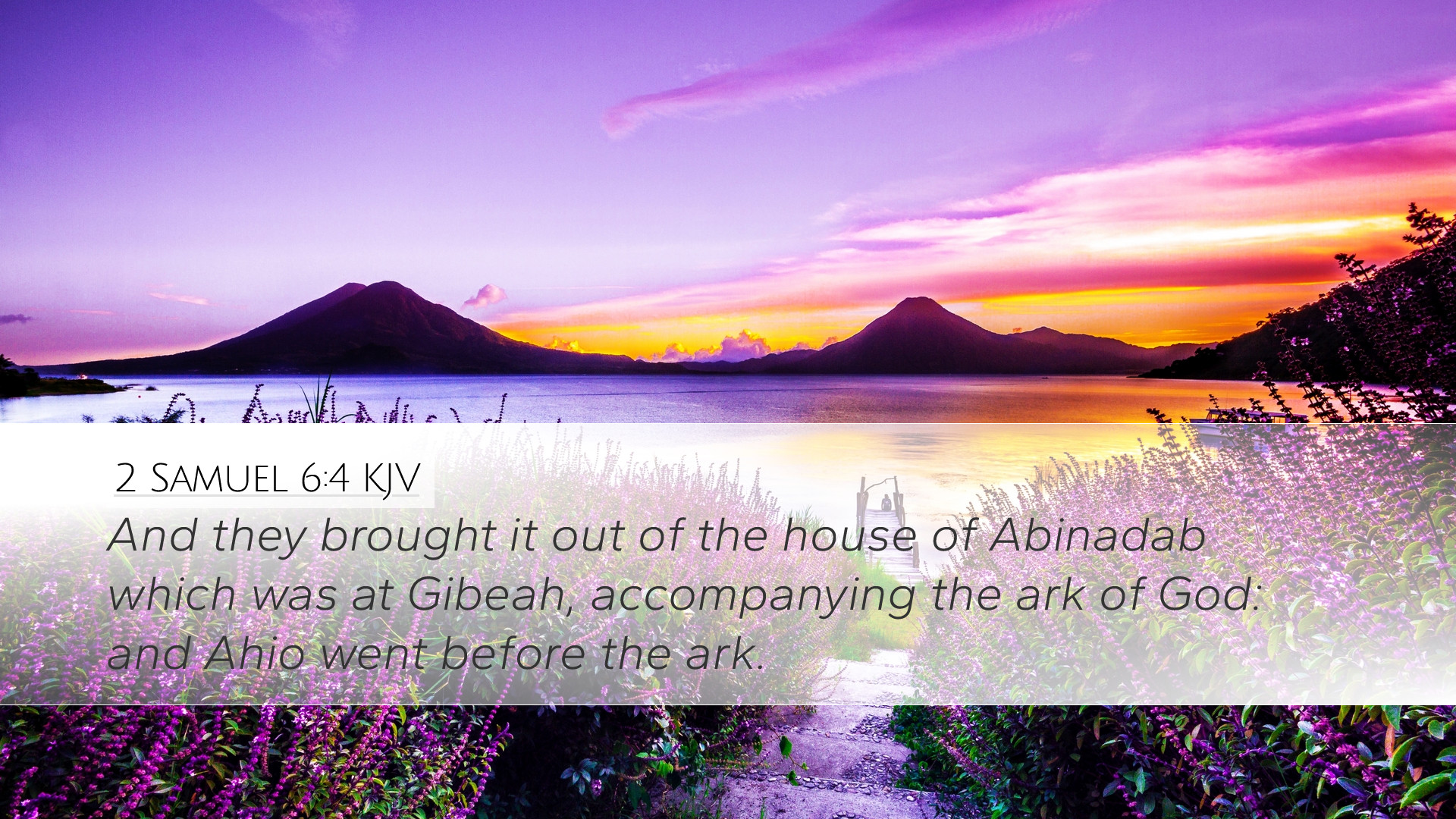Commentary on 2 Samuel 6:4
Verse Context: 2 Samuel 6:4 states, "And they brought it out of the house of Abinadab which was at Gibeah, accompanying the ark of God: and Ahio went before the ark." This passage comes during a significant moment in Israel's history—the return of the Ark of the Covenant to Jerusalem. It encapsulates themes of reverence, divine presence, and community worship.
Historical Background
The Ark of the Covenant, representing the presence of God among His people, had been absent from Israel due to the Philistines' capture and subsequent events. After its retrieval, David seeks to bring the Ark to a central place of worship in Jerusalem. This effort indicates not only a political move but underscores David's commitment to proper worship and recognition of God’s sovereignty.
Insights from Commentaries
Matthew Henry's Commentary
Matthew Henry emphasizes the significance of the Ark as a symbol of God's covenant with Israel. The act of transporting the Ark with such public display is a testament to David’s desire for unity among the people and to honor God’s presence. Henry notes that the transport of the Ark wasn't merely ceremonial; it represented a restored relationship between God and Israel following the disobedience seen during the Philistine era.
Albert Barnes' Notes
Albert Barnes elaborates on the logistics of bringing the Ark from the house of Abinadab. He remarks on the importance of the priests' roles and the Levite responsibility in this sacred task. Barnes highlights the reverence in the transportation of the Ark, which is crucial for understanding the sacredness of God's presence. He insists that this was a moment of joy and celebration in Israel, reflecting a profound communal acknowledgment of their God.
Adam Clarke's Commentary
Adam Clarke explores the ramifications of the Ark's presence and the order of its conveyance. He discusses the roles of Ahio and others, noting that their positions before the Ark were a demonstration of respect. Clarke points out the importance of the location—Gibeah—and its significance in Israel’s history. The Ark's return is not just a geographical relocation; it is also a spiritual pilgrimage, marking a new chapter in Israel's worship practices.
Theological Significance
Presence of God
The Ark is often interpreted as the earthly throne of God. Bringing it to Jerusalem signified that God reigns among His people. This act rekindles the people’s devotion and reverence, emphasizing the importance of God’s presence in their governance and societal structure.
Community Worship
The process illustrates the community aspect of worship. The involvement of multiple individuals in the transport signifies that worship is a collective exercise. The actions taken during this event encourage modern communities to come together, acknowledging God's presence in communal gatherings.
Points for Reflection
- The Value of Reverence: How can we replicate the reverent attitude exhibited by David and the people during our worship services today?
- Leadership and Worship: What can church leaders learn from David's approach to leading the people in worship?
- Restoration and Unity: In what ways does the narrative of restoring the Ark mirror the restoration we seek in our congregations?
- Symbols of Faith: What modern-day symbols act as reminders of God’s presence in our lives?
Conclusion
2 Samuel 6:4 encapsulates a pivotal moment for the Israelites, emphasizing themes of reverence, community worship, and the significance of God's presence. This commentary, drawn from classic works, offers insights that continue to resonate with contemporary readers, urging a deeper engagement with the theology of worship and leadership rooted in a covenant relationship with God.


